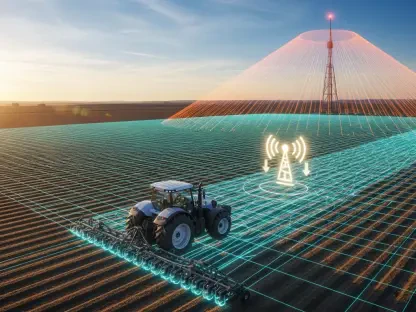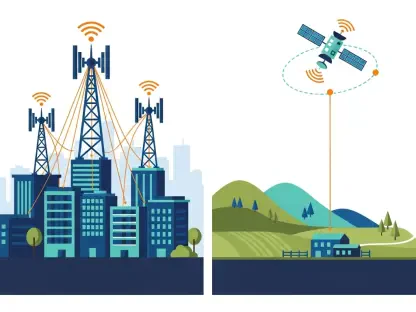The innovative utilization of everyday smartphone technology to study the uppermost layer of Earth’s atmosphere is the subject of this analysis. This pioneering research, conducted by Google in collaboration with the University of Colorado at Boulder (CU Boulder), is transforming millions of Android phones into powerful scientific instruments. This transformation allows for the generation of detailed maps of the ionosphere, which has significant implications for enhancing the accuracy of GPS technology globally. The study, led by Brian Williams from Google Research and Jade Morton from CU Boulder, demonstrates the potential of crowdsourced data in revolutionizing our understanding of the space environment.
Leveraging Smartphone Technology for Scientific Research
Repurposing Everyday Gadgets
The research leverages the GPS sensors embedded in millions of Android smartphones across the globe. Phones, typically seen as everyday gadgets, are repurposed to collect scientific data on how Earth’s atmosphere impacts radio signals from satellites. This innovative approach embodies a broader trend of leveraging existing technology to conduct scientific research in a cost-effective manner. By utilizing the ubiquitous presence of smartphones, researchers can gather extensive data without the need for expensive traditional instruments like radar dishes. Each smartphone, equipped with GPS technology, records data as satellites transmit signals through the atmosphere, allowing scientists to analyze how these signals are distorted by the ionosphere.
This technique is not just cost-effective; it also significantly expands the scope of data collection. While conventional methods can observe only a small fraction of the ionosphere at any given time, the widespread distribution of smartphone users enables more comprehensive observations. Scientists can now gather data from various geographic locations simultaneously, providing a fuller picture of the ionosphere’s behavior. This method’s scalability further enhances its practicality, as millions of phones can contribute information to a central database where researchers analyze trends and anomalies, leading to greater insights.
Expanding Observational Coverage
The study aims to map the ionosphere, a vital yet volatile layer of the atmosphere located more than 350 miles above Earth’s surface. Traditional methods using radar dishes only observe approximately 14% of the ionosphere at any given time. This limited observation window impairs the accuracy of GPS technology. However, the distributed nature of smartphone users worldwide allows for a more comprehensive observation of the ionosphere, potentially expanding the observable portion from 14% to roughly 21%. This expanded coverage markedly improves the ability to map and understand the ionosphere’s behavior.
With this increased coverage, researchers can detect and analyze various atmospheric phenomena with higher precision. For example, during solar storms, which significantly impact the ionosphere, real-time data from numerous smartphones can enable scientists to study changes and predict future disturbances more accurately. This capability is essential for applications relying on GPS technology, such as aviation, navigation, and emergency response systems. By understanding ionospheric behavior more deeply, GPS technology can be refined to offer more reliable and precise location data, ultimately enhancing safety and efficiency in these critical fields.
Enhancing GPS Accuracy Through Ionospheric Mapping
Addressing GPS Signal Disruptions
The fluctuation of charged particles in the ionosphere, influenced by solar activity, can disrupt GPS signals. Accurate mapping of the ionosphere can mitigate these issues, potentially enhancing GPS accuracy from a range of a few to several dozen feet to much more precise measurements. This improvement has significant applications in various fields that require precise location tracking, such as aviation, navigation, and emergency services. For instance, pilots navigating complex airspaces, first responders in life-saving missions, and maritime operators navigating challenging waters all rely on precise GPS data.
Moreover, this project highlights an opportunity to refine the existing infrastructure without substantial investment in new hardware. By leveraging already widespread smartphone technology, researchers can gather and use data efficiently. This fosters an innovative means of counteracting natural disruptions to GPS signals and providing more reliable guidance to systems that depend on pinpoint accuracy. Advances in ionospheric mapping thus promise to resolve many current GPS limitations and unlock new potential for advancements in technology across various sectors.
Real-Time Data Collection
The real-time capabilities of smartphones offer an advantage in tracking sudden atmospheric changes, such as those caused by solar storms. A significant solar storm in May 2024 provided a unique event for data collection, illustrating the responsiveness and effectiveness of the smartphone-based observation network. This real-time data collection is crucial for understanding and predicting the dynamic behavior of the ionosphere, ultimately leading to more reliable GPS technology.
By continuously monitoring conditions, the smartphone network enables researchers to quickly observe and analyze disturbances, such as sudden increases in solar activity, which can dramatically affect GPS accuracy. This responsiveness is particularly beneficial for fields where precise timing and location are crucial, including scientific exploration, military operations, and autonomous vehicle navigation. Overall, the project demonstrates that utilizing everyday technology for real-time monitoring and data collection can significantly improve our understanding of atmospheric conditions and lead to advancements that ensure the reliability and precision of GPS systems worldwide.
Collaborative Nature of Scientific Research
Crowdsourcing and Data Sharing
The research underscores the importance of collaboration in scientific progress. By pooling resources and data from millions of smartphone users, researchers can obtain more comprehensive and detailed data than ever before. The data collected and analyzed was made publicly available, promoting transparency and collective scientific advancement. This approach fosters a collaborative environment for further research and validation, encouraging scientists worldwide to contribute to and benefit from the findings.
Such open-access data sharing accelerates innovation by enabling diverse research approaches and cross-validation of results. Scientists from different disciplines and countries can work together to develop new methodologies or improve existing ones, using the vast and varied datasets made available through this project. This spirit of collaboration has the added benefit of democratizing science, allowing academic institutions, independent researchers, and even hobbyists to participate in groundbreaking research that would typically require significant funding and resources. By embracing the power of crowdsourcing, the study exemplifies how collective efforts can lead to significant scientific breakthroughs.
Cost Efficiency and Sustainability
Utilizing everyday devices significantly reduces the costs associated with ionospheric research, making such studies more feasible and sustainable. This cost efficiency is particularly important in an era where funding for scientific research can be limited. By repurposing existing technology, researchers can conduct extensive studies without the financial burden of traditional methods, paving the way for future advancements in both science and technology.
This sustainable approach also highlights the potential for similar models to be applied in other areas of research, where leveraging widely available consumer technology can greatly expand the scope and reduce expenses. For instance, environmental monitoring, health data collection, and public safety systems could all benefit from integrating everyday devices into their research frameworks. By minimizing costs and maximizing data collection capabilities, such methods ensure that scientific exploration continues to thrive even in financially constrained environments, leading to continued innovation and progress in understanding and addressing critical global issues.
Detailed Atmospheric Observations
Mapping Plasma Bubbles
The team observed and mapped phenomena such as “plasma bubbles,” which are regions with low concentrations of charged particles within the ionosphere. These bubbles exhibit dynamic behavior, rising through the ionosphere similarly to the motion of wax in a lava lamp. Understanding these phenomena is crucial for improving the accuracy of GPS signals, as plasma bubbles can cause significant disruptions. These bubbles can distort radio waves traveling through the ionosphere, leading to signal degradation and errors in GPS systems that rely on uninterrupted signal transmission.
By leveraging the widespread presence of smartphones, researchers can effectively monitor and analyze these plasma bubbles in real-time and on a global scale. This comprehensive observation allows for more accurate modeling and prediction of such phenomena, which in turn aids in the development of strategies to mitigate their impact on GPS accuracy. Additionally, this detailed mapping contributes to our broader understanding of the ionosphere’s complex interactions and behaviors, providing valuable insights for other scientific fields and applications that depend on precise atmospheric data.
Impact of Solar Activity
This analysis focuses on the groundbreaking use of everyday smartphone technology to study the outermost layer of Earth’s atmosphere. Pioneered by Google in partnership with the University of Colorado at Boulder (CU Boulder), this innovative research transforms millions of Android phones into advanced scientific tools. These smartphones are now capable of generating comprehensive maps of the ionosphere. This advancement holds major potential for improving the precision of GPS technology worldwide. The study, spearheaded by Brian Williams from Google Research and Jade Morton from CU Boulder, underscores the transformative power of crowdsourced data in enhancing our knowledge of the space environment. By tapping into the data from millions of users, this project exemplifies how modern technology can be repurposed for scientific discovery, offering a new lens through which to understand the complexities of our planet’s ionosphere. This could lead to significant improvements in communication and navigation systems, showcasing the untapped potential of everyday devices in contributing to large-scale scientific endeavors.









